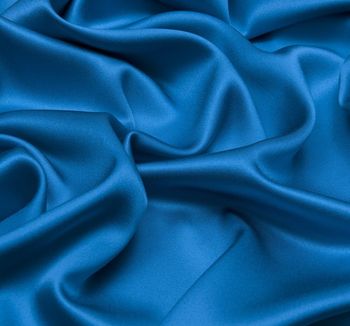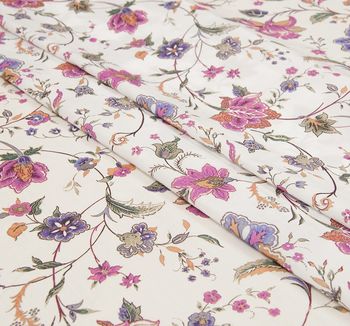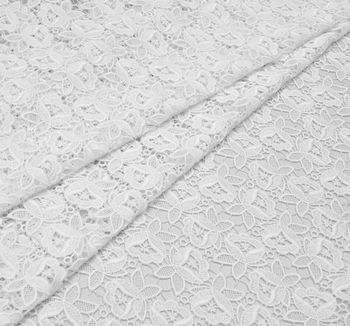Silk is a timelessly trendy natural fabric woven from the cocoons of silk worms. The world’s most famous fashion brands regularly apply it for various men’s and women’s outfits earning the admiration of the audience.
Wool Fabrics – All You Ever Wanted to Know About
Wool fabric is a type of cloth made with application of animal hair for retaining body heat. It has always been one of the most expensive materials with exclusive properties. The luxury of wool is still perceived as the sign of high social status.
In different world regions, particular wool fibres traditionally enjoyed the highest popularity: in Europe, that was sheep, goat, mohair and angora, in the Middle East, people preferred camel, in the footheels of the Himalayas — cashmere, while in the region of Andes — llama, alpaca, guanaco and vicuña. The production technologies and logistics have advanced with times — these days, we have access to any wool fabric type. That is why it is important to know some important features of the each one to make the right pick for your outfit.
Wool fabric collection at Tissura
About Wool
Wool is a natural fiber clipped from animals such as sheep, goat, camel, llama, alpaca, etc. Wool is renowned for its warmth and crease resistance, as well as moisture absorbing properties. One of the softest kinds is the merino wool sheared off merino sheep. Available in a range of weaves, designs and colors, wool fabrics are mostly used for overcoats, jackets, suits, and dresses and are also a popular choice for home textiles.

See the main features:
|
Warm |
Wool fabrics are perfect for winter apparel, because wool fibers do not conduct heat and allow the body to keep its temperature. Still, lightweight wool fabric can be worn in summer. |
|
Flexible and resilient |
Wool fibers are naturally elastic and capable of stretching. Because of natural crimp, they keep their shape well and have great crease recovery. |
|
Strong |
Wool fabrics are durable and resistant to tear. |
|
Drapes well |
Since wool is resilient and elastic, it tends to drape well. |
|
Absorbs moisture |
Wool fibers are water-repellant and absorb moisture. |
|
Dyes easily |
Wool fabrics can be dyed in any color and are colorfast. |
Types of Wool
Here are some common types of wool fabrics one can expect to find:
|
Boiled wool |
tight and durable wool material that has been subjected to boiling, highly wearable and warm. |
|
Boucle |
textured cloth with a looped or curled surface. |
|
Crepe |
soft wool fabric with a slightly textured feel due to the grained effect on the surface, also available in double crepe. |
|
Flannel |
soft wool fabric in plain or twill weave, with a nap on one or both sides. |
|
Gabardine |
tough wool material in twill weave, with diagonal ribs on one side. |
|
Jacquard |
intricately woven fabric with a distinctive pattern produced by weaving. |
|
Tweed |
a midweight or heavy wool fabric crafted in a wide range of patterns and colors. |
|
Twill |
fine wool fabric in twill weave, durable and strong |
Wool fabrics can be classified by their production technology — the worsted and woolen one.
Woolen fabrics are spun from short fibers, while worsted wool is made from longer and fine ones. Compared to woolens, worsted wool fabrics are brushed in two directions with special brushes.
Wool yarn differs in quality: it is bulky for woolen fabrics and smooth for worsteds.
Woolen Wool
Woolen materials are less durable and less wrinkle-resistant, but they excel in keeping us warm and cozy.
|
Characteristics |
Woolens |
|---|---|
|
Fibers |
Short |
|
Processing |
Washed, scoured and carded |
|
Twist |
Low to medium |
|
Weight |
Heavier |
|
Feel |
Hairy, fuzzy, soft |
|
Use |
For knitted and crocheted items, tweeds, coats |
Worsted Wool
Worsted cloths are lighter, smoother and more durable, but provide less warmth. However, they are better at keeping off rain.
Worsted wool requires more processing (remember, it is made of long staple fibers only), it tends to be more pricey compared to woolens. The most common uses for worsted fabrics are suits and tailored clothes.
|
Characteristics |
Worsteds |
|---|---|
|
Fibers |
Long (8-12 cm) |
|
Processing |
Washed, scoured, carded and combed |
|
Twist |
Tighter |
|
Weight |
Lighter |
|
Feel |
Smooth, soft |
|
Use |
For suits and dresses, crepes |
Why Is Merino Wool Perfect for Suiting Fabrics?
Suiting fabrics are always in high demand especially when it comes to business wear. Although there are several types of wool one can use for suits, merino wool is by far one of the best. It comes from merino sheep that lives in Australia and New Zealand in extreme weather conditions.
Why is merino wool so special? Here are just some of the reasons:
- It is breathable. Merino fibers make fabrics that release heat and keep you dry in any conditions.
- It is both warm and cool. Merino wool provides ultimate warmth when needed, but it also lets you cool down when your body starts warming up.
- It is strong. Merino fibers can be easily flexed and stretched, and nothing happens to them.
- It is soft. Compared to coarse wool, merino fibers do not itch, all due to their fine diameter.
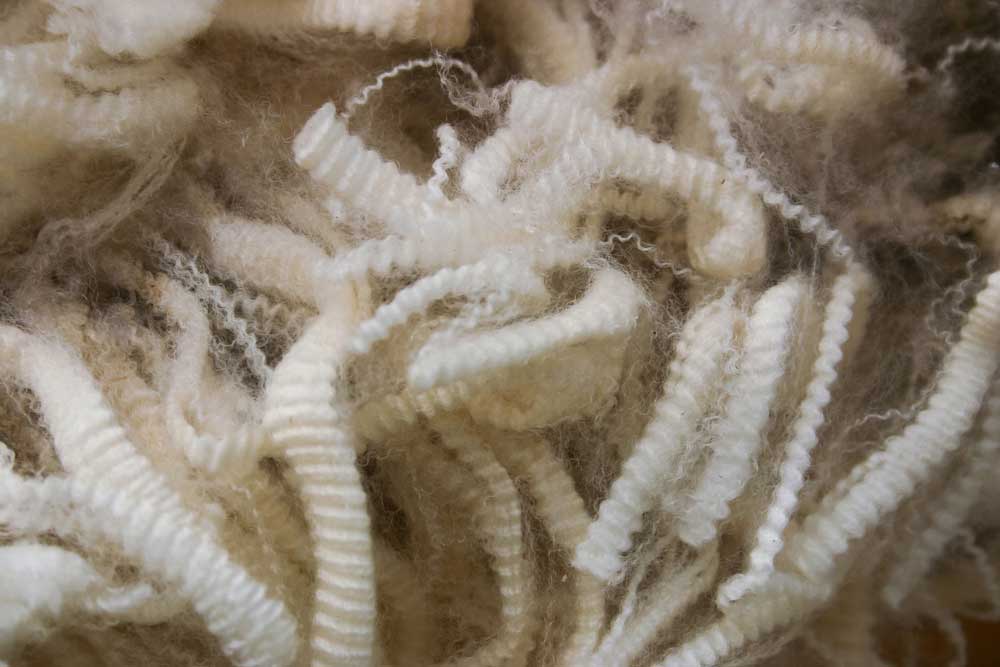
Wool suiting fabrics are popular both among men and women. They are easily crafted into trousers, jackets, vests, dresses, skirts and even shorts.
Wool Super Number
A great deal of men’s suiting fabrics has a woven ‘Super’ number at the selvedge. It indicates the fineness of wool yarn: the higher the number, the finer the fabric is. Any cloth from Super 100’s to Super 250’s is considered to be of high quality.
Is Super 250’s better than Super 100’s? By all means, it is much thinner – and more fragile. A Super 250’s suit looks fantastic, but it can be easily damaged by scraping. Such delicate fabrics are used for suits meant to be worn on special occasions only.
Wool Coating Fabrics
A coat is an essential part of your wardrobe when it’s quite cold outside, and you still want to look chic.
|
Coating fabric |
Features |
|---|---|
|
Cashmere |
Light, stylish and fashionable |
|
Wool jacquard |
Soft, warm and fuzzy surface, stylish design, sometimes with fancy embroidery. It is often blended with cashmere or silk |
|
Wool twill |
Perfect combination of superb prints, resilience, warmth and breathability |
For those of you who love double faced fabrics, we come up with the special selection:
|
Coating fabric |
Features |
|---|---|
|
Double faced wool flannel |
Exceptional soft finish, wear-resistance, warmth and legendary therapeutic properties |
|
Double faced cashmere |
Exceptionally warm, lightweight, stylish, silky soft hand feel |
|
Double faced wool twill |
Perfect harmony between warmth, durability and elegance |
Storm System Collection
Storm System ® is the collection of special wool fabrics for demanding weather conditions. This coated quilted wool comes in three types:
- with a water-repellent layer for rain protection;
- with an anti-wind membrane;
- with two anti-wind membranes and a water-repellent layer — your ultimate solution for a harsh climate. At the same time, all the three let your skin breathe.
Luxury Wool Fabric
One of the most valued types of luxury wool is worsted merino wool from Australia and New Zealand. These countries supply high quality wool that is later combed and woven into fine worsted suitings and soft coatings.
Probably, no less famous are mohair and angora. Mohair comes from the Angora goat, while angora is made from the hair of the Angora rabbit. Mohair is resilient and soft, and though its fiber is quite thick (23-24 microns), it has more sheen compared to regular sheep’s wool.
One of the key factors that determine the quality of luxury wool is the diameter of its fiber. The smaller the fiber, the softer and lighter the yarn.
|
Type of Wool |
Sourced From |
Texture |
Fiber Diameter |
|---|---|---|---|
|
Cashmere |
Kashmir goat – Mongolia, China, India, Iran |
Lightweight, very soft and silky |
14-19 microns |
|
Alpaca |
Alpaca – South America |
Silky and lustrous |
18-25 microns |
|
Vicuña |
Vicuña – Peru |
Finest animal fiber, very soft |
12.5-13 microns |
|
Camel |
Camel – Mongolia, Tibet, Iran |
Fine, soft and incredibly warm |
16-18 microns |
|
Guanaco |
Guanaco – South America |
Soft and lightweight |
16-18 microns |
It is easy to get lost in all this variety of rare wool. Let’s see what makes each type of wool so valuable and prized. Below is some basic information you might find useful when making a pick.
Cashmere
The fleece is lightweight, silky and surprisingly warm, with a beautiful sheen. Rare and expensive, cashmere fabric is an unmatched beauty perfect for fall/winter garments, such as a sweater, cardigan or pullover.
Alpaca
The alpaca is a delicate animal from the camel family. Its silky soft fleece makes warmer fabrics compared to merino wool. Natural waterproof and free of oil, alpaca wool is hypoallergenic and is a real escape for those with sensitive skin. There are two breeds – Suri and Huacaya, and their fleece is slightly different. The Suri alpaca has silkier fleece, while the Huacaya produces dense and soft wool.
Vicuña
The vicuña is another delicate animal from the camelid family with the finest wool fiber in the world. Sheared off once in three years in the wild, it produces only 17 ounces of fiber a year. Vicuña wool comes in its natural color, white or tawny brown. It is the rarest and softest of all wool fabrics, once worn only by royalty.
Camel
The camel hair we use to make fabrics is the undercoat of the two-humped Bactrian camel. It is very soft, fine and elastic. It also provides the best insulation and is a popular choice for coats, jackets and other outerwear. Adult camels give from 10 to 20 pounds of fleece in a variety of brown shades, used as it is or dyed in rich solid colors. The finest camel hair is white, and it comes from baby camels.
Guanaco
The guanaco is a wild camelid from South America. Cousin of the vicuña and the alpaca, it is known for its soft downy undercoat. Guanaco wool is extremely warm and protects easily against wind, rain and cold. Lightweight and water resistant, it is a rare catch, since one adult animal gives no more than 3 pounds of wool. Guanaco is rarely dyed, as there are 22 different natural colour shades. It is the second finest natural fiber after vicuña. Used in a shawl, this fabric feels buttery to the touch and is always the right pick when the weather gets colder.
Baby cashmere is one of the rarest kinds of cashmere wool. Obtained from the fleece of goat kids, it is about 13-13.5 microns. Extremely lightweight and unbelievably soft, baby cashmere is hard to lay hands on. To make one sweater, you’ll need around 19 goat kids.
Who Are the Main Manufacturers?
Australia and New Zealand are two top-ranked suppliers of high quality wool fabrics. The manufacturing process is time-consuming and expensive.
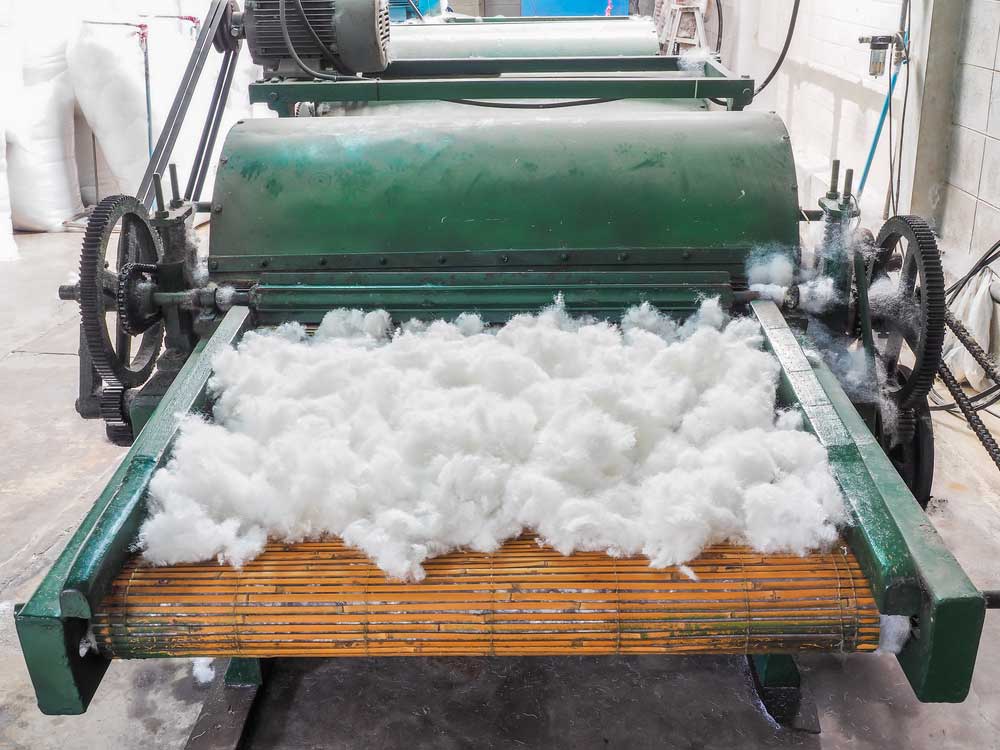
Here are some of the best manufacturers with a worldwide reputation for specialty wools:
|
Agnona |
Double-faced cashmere and alpaca for coats, silk & cashmere blends for dresses and suits |
|
Luigi Colombo |
Stretch cashmere, chinchilla & cashmere, cashmere with beaver, mink or vicuna for coats, cashmere & silk and wool blends for suits |
|
Dormeuil |
Coating alpaca and cashmere, cashmere with silk for jackets |
|
Scabal |
Pure cashmere and wool blends for suits, exclusive lapis lazuli wool & cashmere fabrics for jackets and trousers |
|
Holland & Sherry |
Pure cashmere and blends with wool and silk for suitings, chinchilla and cashgora for coatings |
|
Ermenegildo Zegna |
Suiting cashmere & silk, cashmere and vicuña shawls and scarves |
|
HOH |
Warm guipure lace woven with camel hair |
|
Jakob Schlaepfer |
Cashmere and alpaca for dresses, jackets, skirts and coats |
|
Incalpaca |
Coating alpaca |
Wool Care Instructions
Here’s a simple rule: do not wash wool fabrics, especially if they are expensive. Always turn to professional dry-cleaners. Most fabric manufacturers provide guidelines on how to clean various materials, but even if there’s no information available, experts will help you out anyway.
If you are a neat wearer, wool clothes will last for years. Alpaca, for instance, is water-resistant and does not attract dust.
It is also very important to store wool products properly. Since wool is a natural fiber and absorbs odors, make sure you have your garments cleaned when the season is over. Store them in a place treated with natural repellents such as lavender oil or cedar balls, or use scented sachets to keep pests and moths away. Choose paper and other natural materials over plastic bags, as they tend to accumulate moisture that can damage the wool garment.
Exclusive wool fabrics are a true luxury we all are aspiring to have. 100% natural, they are ideal for colder months when silk and cotton do not help. Coats, jackets, ponchos, shawls, scarves, sweaters, gloves, mittens, hats – end-uses are limitless. Wearing high quality wool, be it alpaca, cashmere or vicuña, is a surefire way to look chic, elegant and sophisticated.
Tissura Wool Fabrics
At Tissura, you can find the widest range of luxury wool fabrics in regular collections. See below some of the most remarkable ones. Just click on the photo, and you will get to the product page:
Worsted wool fabric, 125 € (153 US$) per one running metre;
Worsted wool fabric, 140 € (171 US$) per one running metre;
Worsted wool fabric, 125 € (153 US$) per one running metre;
Worsted wool fabric, 110 € (135 US$) per one running metre
How to stay cool on a hot summer day? Wear fabrics built for the heat. Cotton, linen, viscose, silk – there are dozens of summer-friendly materials you can choose for your wardrobe. The best fabric to opt for when the temperature rises should be breathable and comfortable.
The wedding dress is one of the most important clothing items a woman gets to choose in her lifetime. It can be made of silk or cotton, lace or tulle, be strewn with sequins or embroidered with beads.
.jpg)
.jpg)
.jpg)
.jpg)
